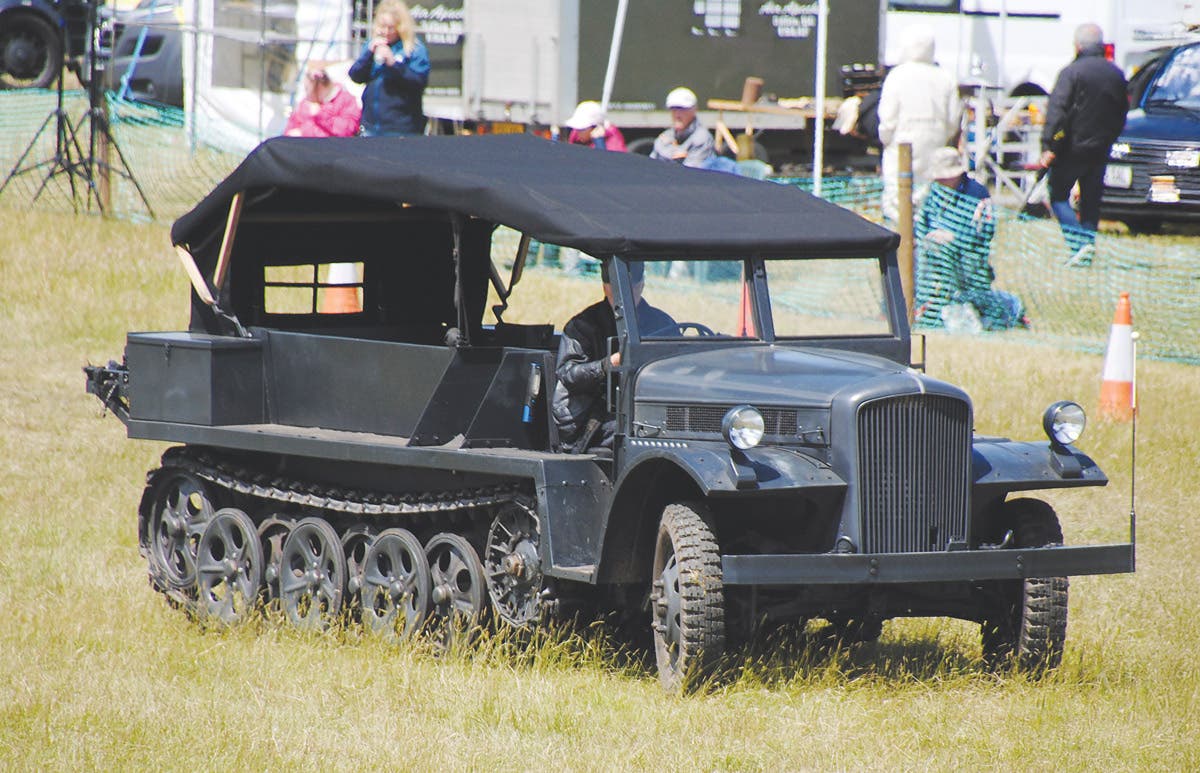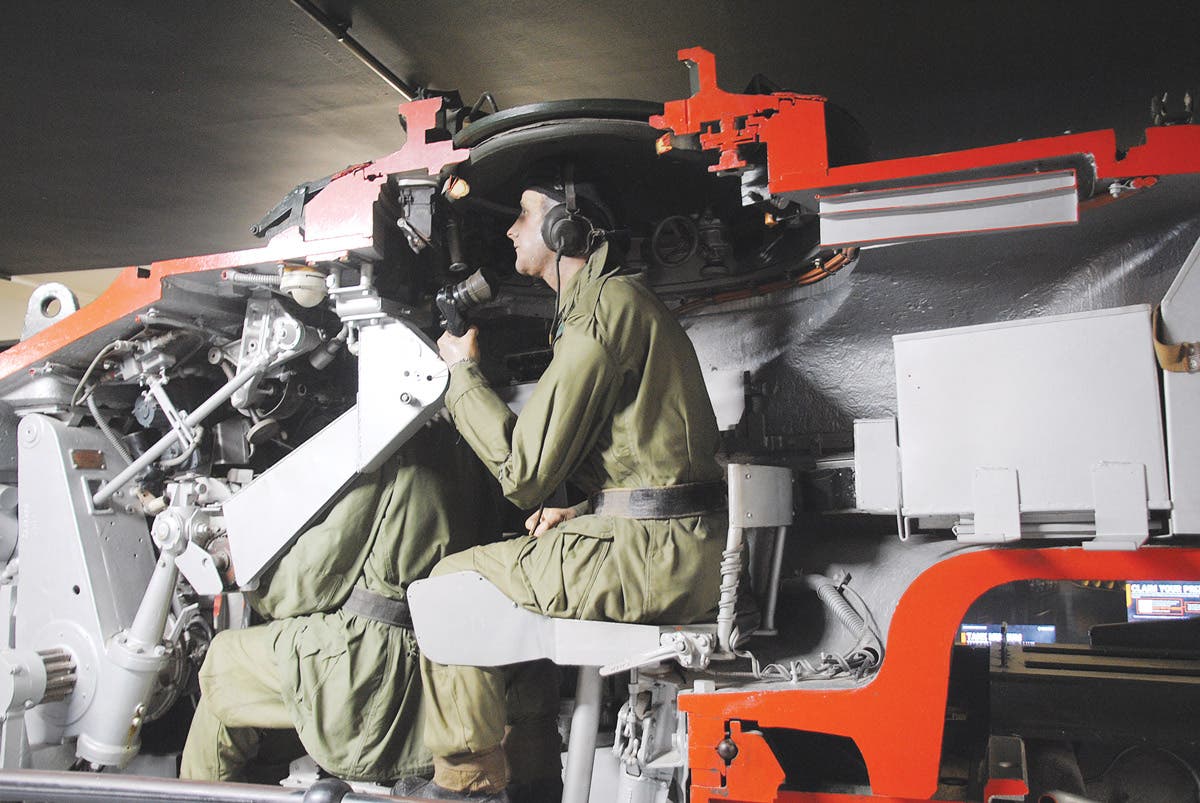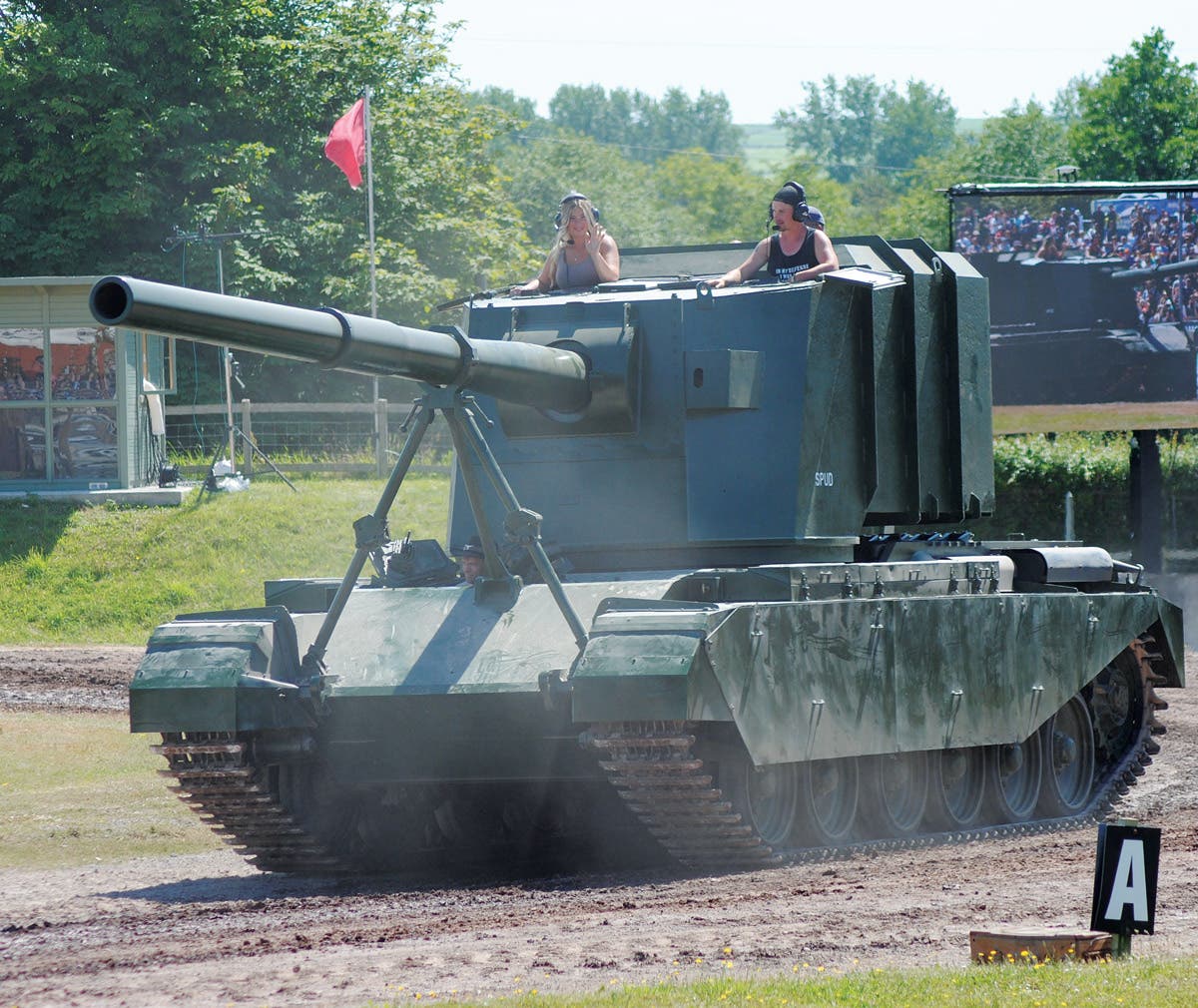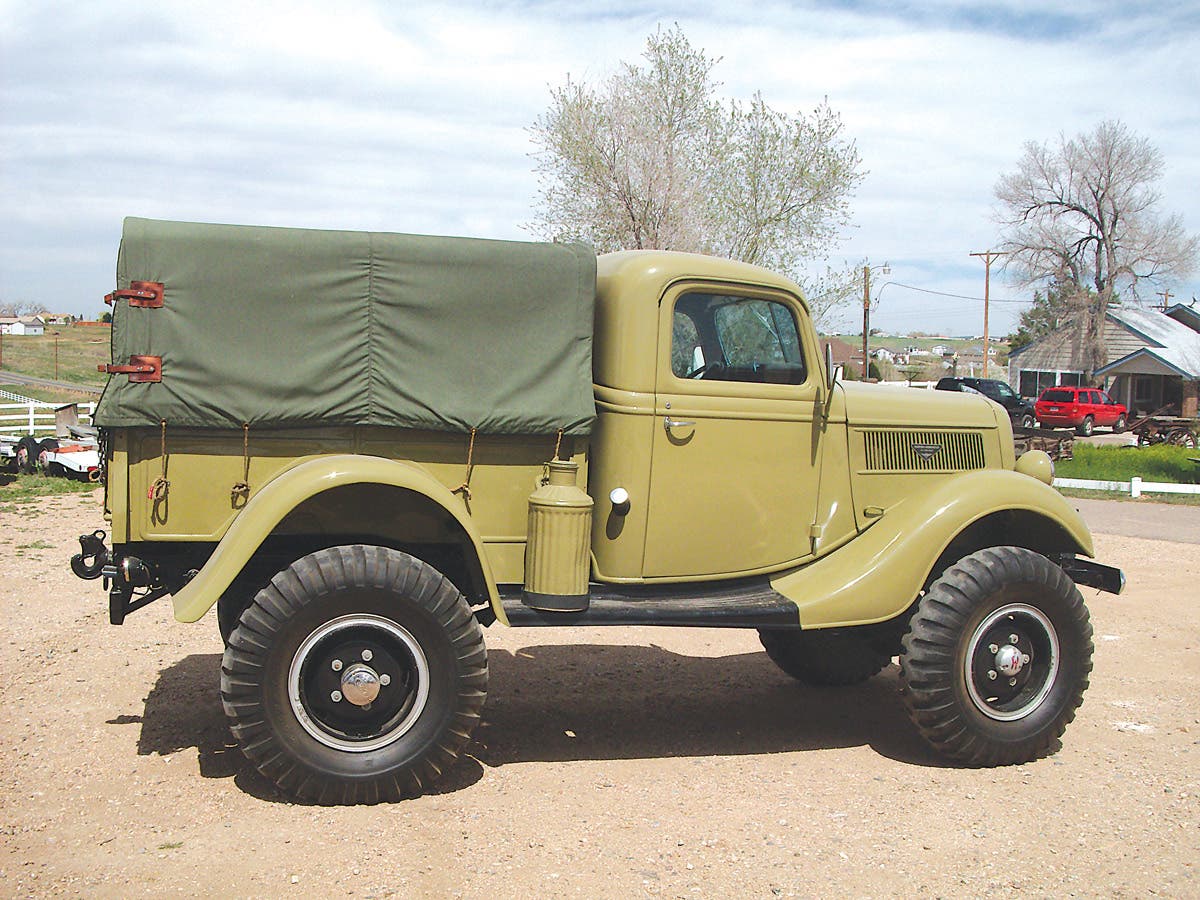Happy Trails, Happy Trailers
A MV enthusiast’s primer for pulling…Military trailers.
I got my first jeep, an M38, when I was 17 in the summer I worked at a lake and recreation area in Monterey County, Calif., near Hunter Ligget Military Reservation and not far from Camp Roberts. While at the lake I discovered that some of the most amusing scenes were people trying to back their boats on trailers down the launch ramp, and the trailers would go everywhere except into the lake. The company I worked for also rented small camping trailers, and one of my duties was to deliver these trailers to camp sites. I often used my M38 after finding that I could clamp the trailers’ ball-type hitches into my jeep’s pintle (not recommended for highway use) and thanks to working in my dad’s scrapyard since age 8, I was fairly experienced at backing trailers.
Just like at the launch ramp, I never tired of watching inexperienced people trying to back their own trailers into camp sites. These were often man and wife teams, the wife calling directions, while the man tried to back the trailer, and both often ending up screaming at each other, their children either laughing or staring open-mouthed, when the trailer went everywhere except where it should have. I also found I could pick up a few dollars by tactfully offering to help. No doubt some adult egos were stressed when a 17-year-old boy could do in a minute what they had been trying to do for half an hour, but at least the trailers ended up where they were supposed to be.
There is no magic involved in backing a trailer if you will remember Rule Number 1: a trailer will go in the same direction as the bottom of your steering wheel.
Try steering from the bottom until you’re experienced enough to know which direction the bottom of the wheel will go when steering from a normal position.
Rule Number 2: the shorter the trailer, the faster it will react.
While many HMV enthusiasts have prior experience with trailers from boating, camping or work, there are also many who acquire their first trailer along with their first HMV. These are often quarter-ton trailers of the G-529, G-747 or G-857 families which might be included with the purchase of a WWII Willys MB or Ford GPW, a Korean War vintage M38 or M38A1, or a Vietnam-era M151. Keeping Rule Number 2 in mind, these are the most difficult trailers to back because they react very quickly.
One may also acquire their first trailer with the purchase of a Dodge WC or M37, or a Kaiser M715. These trailers are often 3/4-ton models in the G-748 family, and includes the M101 and the current M1101. These are little slower to react than jeep trailers, but still quite nimble.
Moving up the scale, one’s first trailer may be a 1-ton G-518 or a 1-1/2-ton model in the G-754 family, such as an M104. Such trailers might come with a Chevrolet G506, a GMC CCKW or M211, or a Reo M35. They are also short trailers and react fast.
Then there are the big boys, either full or semi-trailers, which may come with a deuce or 5-ton truck or truck-tractor, and/or even larger trucks, truck-tractors and trailer combinations.
For those new to the art of trailering, it should be understood that it’s not “just a trailer.” It’s another vehicle, not only in the eyes of motor vehicle laws, but also in realtime. When you’re towing a trailer you’re driving two vehicles and are responsible for both, together and separately, at all times. A mishandled trailer, even a little jeep trailer, is capable of doing a lot of damage, not only to people, places and things but also to the vehicle that’s towing it. While many insurance policies automatically cover smaller trailers, it would be wise to read the fine print and/or contact your agent to be sure your trailer is covered. Again, you are responsible for your trailer as a vehicle, even when it’s not attached to your jeep or truck. In fact, many states require separate insurance on large commercial trailers. If your trailer should roll into a street when unhitched and hit another vehicle, a person, or damage property; or if another vehicle should run into it if it’s rolling away or improperly parked, you are responsible.
Since a trailer is a vehicle, it might help to think of a trailer as a vehicle without an engine that travels on the road. It also requires regular service, maintenance and repair to keep it safe and roadworthy. Most jeep, 3/4-, and 1/2-ton trailers have mechanical parking brakes, and larger military trailers usually have air-over-hydraulic or straight air brakes, and these require service, repair and adjustment just like motor vehicle braking systems. Of course, trailers have tires, wheels, and wheel bearings, which must also be cared for, as well as lighting systems. Servicing most trailer wheel bearings is just like servicing bearings on solid front axle motor vehicles. And, just like trucks, trailers must be properly loaded to handle well and avoid damage to their hitches, frames, springs and axles. A rule of thumb is that about two-thirds of a cargo load should be at the front of a trailer or forward of its axle(s). If not, the trailer may whip back and forth while being towed, especially jeep and other two-wheeled trailers, and the whipping will become more violent the faster one goes.
It should go without saying that trailers must be securely attached to their towing vehicles to avoid damaging people, places and things, themselves, the tow vehicle... and you.
Regulations vary from state to state, but most states require a safety chain, except on commercial semi-trailers, some require a service braking system on trailers over a certain weight, and most require a lighting system of tail, stop and turn signals on smaller trailers and clearance lamps on larger ones… though some permit the towing of a small trailer or piece of equipment -- such an air-compressor, welder, generator or anti-tank gun -- without lights as long as the towing vehicle’s lights can be seen from the rear. Most states also require reflectors on trailers, usually two red ones on the rear, and amber or red reflectors in addition to clearance lamps on the sides of larger trailers. Check not only your own state’s regulations, but also those of any other states in which you plan to tow your trailer. While parking brakes aren’t usually required, remember that you are responsible if your unhooked trailer rolls away. Bricks, stones or plain wooden blocks may shift or pop loose: safer to make or buy genuine chocks to secure your trailer’s wheels. Remember that parking brakes can slip or fail, or be released by curious people.
Almost everything you need to know about military trailers in general can be found in easily obtainable manuals, such as TM 9-800, while specific details for your own trailer will be found in its appropriate manual. For example, here’s what TM 9-8000, Principles Of Automotive Vehicles, has to say...
A motor vehicle can pull a heavier load than it can safely carry. This fact is put to use in motor transportation by using trailers and semi-trailers. A trailer, or semi-trailer, is a cargo vehicle with no motive power of its own, towed by a motor vehicle. Motor vehicles specially designed for towing trailers or semi-trailers, are known as tractors or truck-tractors.
Considerable time must be spent in loading and unloading certain types of cargoes. Trailers are useful in such cases because they can be left at the loading and unloading points while the tractor tows other loads.
Trailer spring suspension is the same as that employed on motor vehicles. Auxiliary springs are often used. Radius rods are sometimes used to maintain axle alignment and to transmit braking and pulling action between the trailer axle and frame. Trailer wheels are usually slightly cambered.
Air, vacuum, or electric braking systems are often used with larger trailers. The trailer braking system is coupled to that of the towing vehicle by a flexible hose and detachable couplings or cables. The trailer braking system is usually designed so the brakes are applied and keep the trailer in place when these couplings are disconnected. However, when the trailer is detached from the towing vehicle, the trailer brakes will hold for only a limited time. For this reason, wheel chocks are usually used to keep the trailer in place when it is to be idle for some time. Provisions are often made for carrying wheel chocks on a trailer.
Trailers are of three general types, depending on the manner in which their weight is supported: the semi-trailer, the three-quarter trailer, and the full trailer. A large part of the weight of a semi-trailer is supported by its connection (fifth-wheel) to the towing vehicle, the remainder being supported by the wheels of the semi-trailer. The weight of a 3/4 trailer is mostly balanced on and supported by the trailer wheels; and any unbalanced weight is supported by the connection to the towing vehicle. The entire weight of a full trailer is supported by the trailer wheels.
Trailers are made in many sizes and are equipped with various body styles depending upon the service for which they are intended. The connections between towing vehicles and trailers differ according to the type of trailer involved. Two main types are used: The fifth wheel (semi-trailers), and the pintle hook connection (three-quarter and full trailers).
Semi-trailers
A typical semi-trailer chassis consists of a frame, spring suspension, axle, fifth wheel connection, and a landing gear. It resembles a conventional truck chassis in that its frame is made of two pressed-steel side members with several cross members and has laminated leaf spring suspension. The wheels and tires are usually interchangeable with those of the tractor used for towing the trailer.
Early semi-trailer frames were built of straight side members, which meant that the rear of a level trailer body had to be at a considerable height above the ground to clear the rear wheels of the tractor. Such a high frame is objectionable because it heightens the center of gravity, making it easier to overturn the trailer, especially during off-highway operation. A kick-up in the semi-trailer frame permits a lower center of gravity without reducing the necessary clearance space above the rear wheels of the tractor.
Cross members are located where the greatest strains occur to the trailer frame. They may be tubular, channel, or box-shaped, with gusset plates riveted or welded to the side members to make a rigid frame.
Another type of semi-trailer with a variable wheelbase is the “pole trailer” used for transporting long or irregularly shaped goods, such as poles, pipes, or structural members. In this case the pole, or boom, forms the trailer frame. The pole is attached to a turntable mounted on the tractor in much the same manner as a fifth-wheel. The trailer axle unit is attached by adjustable clamps to the other end of the pole.
A truck-tractor used to haul a semi-trailer must be specially designed. lts wheelbase is often shorter than that of a standard truck, and the engine and transmission units are designed to produce the necessary power for pulling a loaded semi-trailer. Truck-tractors may be designed with the cab over the engine, or may be of conventional truck design, with either single or dual rear axles.
A landing gear is a retractable support under the front end of a semi-trailer to hold it up when uncoupled from the truck-tractor. The two leg members of the landing gear are usually attached to the underside of the trailer chassis by pivot pins. These leg members are connected by cross braces to resist any side strain. Two small steel wheels, mounted on the end of these leg members, facilitate moving the trailer when it is uncoupled from the tractor. Bracing members connect the lower end of the leg members to a movable bracket containing a nut which rides on a worm shaft located lengthwise between the side members of the trailer frame. Rotation of the worm shaft moves the bracket forward or backward depending on the direction of rotation and consequently lowers or raises the landing gear wheels.
The worm shaft is supported by bearings in a housing mounted on the underside of the trailer chassis. It is rotated by means of a set of bevel gears at the forward end of the housing. These gears are turned by a hand-operated crank which extends out to the side of the trailer.
The height to which the landing gear lifts the front end of the trailer above the ground can be varied by adjustable clamps at the top of the two leg members. This adjustment is necessary if the trailer is to be used with truck-tractors having different rear end heights.
When semi-trailers are coupled and uncoupled, it, is important that the landing gear be coordinated with the fifth-wheel lock. If the landing gear is elevated before the fifth-wheel connection is fully locked, the front end of the trailer will drop to the ground when the tractor is driven away, with the possibility of damaging both the load and the trailer. Before the trailer is uncoupled, the brake coupling should be disconnected so the trailer brakes are applied to prevent it from moving. Automatic controls are sometimes used to coordinate the desired features. Auxiliary locking pins strike against the lower fifth wheel plate on the truck-tractor and lock the fifth wheel connection, preventing the trailer from being separated until the landing gear is fully lowered. These auxiliary locking pins are connected by an actuating rod in such a way that they cannot unlock the fifth wheel connection until the landing gear is fully lowered and the trailer brakes are applied.
The standard method of connecting a truck-tractor to a semi-trailer is by means of a fifth-wheel, A heavy steel plate assembly is securely attached to the underside of the front end of the trailer frame. This plate serves as the bearing, or front end, support of the trailer when it is coupled to a tractor. The front edge of the plate is turned up approximately 45 degrees to form a skid which slides on the lower fifth wheel plate (mounted on the truck-tractor) when the trailer is being hitched to the truck. In the center of the upper fifth-wheel plate is a permanently attached kingpin by which the tractor pulls the trailer.
The lower fifth-wheel contains the movable parts of the assembly and supports the trailer load thrust on the tractor. The circular portion of the heavy cast steel plate is the bearing surface upon which the upper plate of the trailer rides. The circular groove in the lower plate is a grease retainer for lubricating the rubbing surfaces of the upper and lower plates. The sloping ramps aid in picking up the upper plate of the trailer when the tractor is backed underneath. The wide open space between the ramps guides the kingpin into place. The lower plate is pivoted on a rocker pin crosswise to the truck-tractor, providing a free swinging movement between the trailer and tractor. The outer ends of the rocker pin are supported in-pillow blocks bolted to the bedplate which is mounted on the frame of the tractor.
There are three types of fifth-wheel couplings: permanent, semi-automatic, and automatic. In a permanent fifth-wheel coupling, the kingpin is made part of the lower fifth-wheel plate, and, once it is locked in position, the truck-tractor is operated with the same trailer at all times. In semi-automatic and automatic fifth-wheel couplings, the kingpin is mounted on the upper fifth wheel plate. The kingpin is locked in position by a kingpin lock which is a ring on the lower fifth-wheel that clamps around the kingpin. In the semi-automatic coupling, which is the most common type, the kingpin lock is operated by a hand lever that extends to the side of the lower fifth-wheel. The automatic coupling is locked in a similar manner, except that it is controlled by the operator from the truck-tractor cab.
A fifth wheel should be located at a point on the truck-tractor chassis that will best distribute the portion of the trailer load thrust on the tractor. The fifth-wheel should be mounted ahead of the tractor rear axle to accomplish this.
Another important factor in the location of a fifth-wheel is that of safety in hilly or mountainous country. When climbing steep grades, the load thrust will act at a point back of the tractor’s rear wheels. If the fifth-wheel is located directly over the rear wheels, it will tend to raise the front wheels of the tractor off the road. This will cause a dangerous loss of steering control which is aggravated by every bump in the road. With the fifth-wheel and, consequently, the load center located well ahead of the rear wheels, this hazard is avoided, as the load thrust will always fall ahead of the driving axle.
Another danger from an incorrectly located fifth-wheel is created by the momentum of the trailer. The trailer has a tendency to push the rear end of the tractor off the road when making a sharp turn, especially if the road is wet or covered with ice or snow. With the fifth-wheel located ahead of the tractor’s rear wheels, the load thrust is placed between the tractor axles and offers additional resistance to the momentum of the trailer.
Clearance of at least 12 inches between the rear of the truck-tractor cab and the front of the trailer body should always be maintained.
Three-Quarter Trailers
Three-quarter trailers (usually 2-wheel) are used for light loads and are generally towed by jeeps and small trucks. Most of the trailer load is balanced on the trailer’s suspension. Three-quarter trailers are built in many sizes and are fitted with various bodies ranging from general cargo and tank (fuel and water) to house type trailers used as hospital, field kitchen, and recruiting vehicles. In some heavier types of three-quarter trailers, tandem or triple axles are used. The front of the trailer frame forms a V, and on tactical trailers the lunette (tow ring) is attached to the front and is clamped in the pintle (tow hook) of the towing vehicle. A safety chain (or chains) is used to prevent the trailer from breaking loose should the pintle unlatch or fail. On some non-tactical vehicles a standard SAE No. 2, ball-and-socket coupler is used instead of a pintle and lunette.
House type trailers, in comparison to cargo types, are lightly built to reduce weight and to allow the use of soft springs, and are usually designed for use with softer-sprung vehicles. If they are coupled to vehicles with stiff springs, the towing connection may be stressed, and ball type hitches may be jarred loose. In off-highway conditions, trailer springs may break, and axles and frames may bend or crack.
Full Trailers
Full trailers, which support their entire load, may be connected directly behind the towing vehicle, to a semi-trailer, or to another full trailer. They are independent and fully contained vehicles without motive power.
Early full trailers were equipped with knuckle or Ackerman steering as used on motor vehicles, but most full trailers now use fifth wheel steering. Many full trailers are constructed with a simple type of fifth wheel consisting of two large steel plates and a kingpin. In a heavily loaded trailer, considerable binding between the fifth wheel plates hinders free steering, so when the driver steers the towing vehicle to the right or left, the binding fifth wheel resists the turning effort and tries to keep the towing vehicle traveling straight ahead. This is readily apparent to the driver when operating on slippery roads and makes steering not only difficult, but dangerous. To overcome this, there is a tendency toward more refined fifth wheel designs that will turn freely under heavy loads by the use of bearings.
Most full trailers can only be backed for a very short distance because their front and rear sets of wheels will generally go in opposite directions and cannot be controlled by the towing vehicle.
A semi-trailer may be converted into a full trailer by mounting a fifth wheel on a dolly and using the dolly in place of a tractor as the trailer’s front end support. Such a combination is known as a converted semi-trailer. The dolly is merely a short two-wheel trailer chassis with a standard lower fifth wheel mounted on its frame. A lunette is attached to the front of its frame for towing by a pintle.
Matching Towing Vehicle and Trailer
Matching a towing vehicle and a trailer means more than merely coupling them. The brake systems must match, as well as the electrical systems. Furthermore, the trailer load must not exceed the performance of the towing vehicle.
The towing vehicle and trailer electrical systems must be of the same voltage. If the towing vehicle has a 6-volt system, the trailer must also have a 6-volt system. Likewise, if one has a 24-volt system, the other must have a 24-volt system. Connecting 6-volt lights to a 24-volt system will cause them to burn out as soon as they are turned on. On the other hand, 24-volt lights connected to a 6-volt source will give little or no light.
The brake systems must also match. If the towing vehicle has an air-pressure system, the trailer must also have an air-pressure system. Likewise, if the towing vehicle has a vacuum-type or an electric braking system, the trailer must have a matching system.
To avoid overloading the towing vehicle, excessive loads must not be hitched to it. The trailer load must not be above that which the towing vehicle was designed to pull. The technical manual of the towing vehicle usually has the maximum trailer load listed in the tabulated data section.
So there you have the official U.S. military word on trailers. Again, specific details about you own trailer will be found in its manual. Like most skills, backing a trailer can only be learned through experience, but it’s really not that hard if you remember Rule Number 1.






